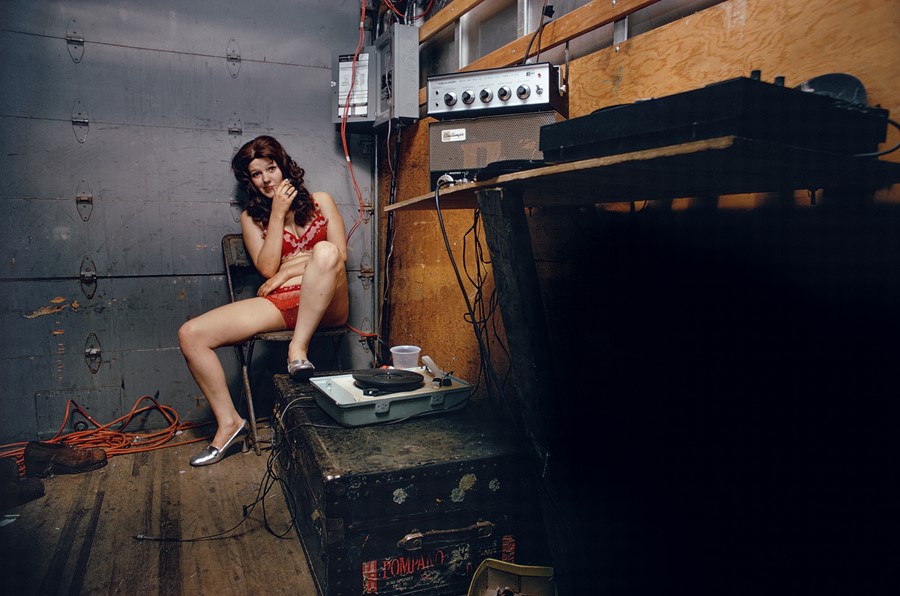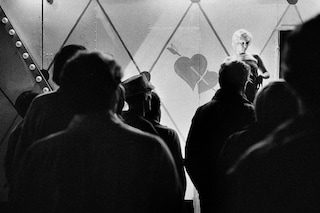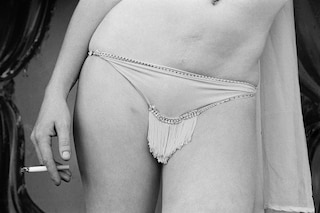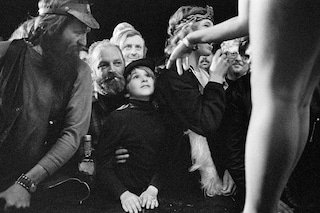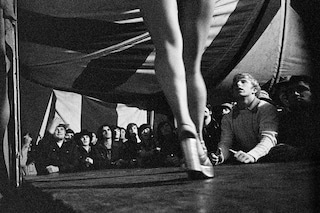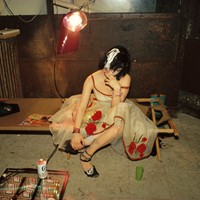A re-issue of her legendary photobook, Carnival Strippers, includes never-before-seen material of American dancers on the road
American photographer Susan Meiselas was taking pictures of state fairs in 1971 when she discovered something called ‘The Girl Show’ hidden away behind the other attractions at the very back of the event. The striptease performance – which prohibited the admittance of “ladies and babies” – captured her attention. “The Girl Show was just beyond my imagination,” she recalled in a recent discussion with art historian Felix Hoffmann. Something about the show felt prescient and vital. “The women’s liberation movement was part of our vocabulary, the issues that the girls raised, standing there – very boldly – in a public fairground, drew my attention.” Still in her early-mid twenties, Meiselas hadn’t yet formed the intention of becoming a photographer, but she resolved to return the following year to make sense of this intriguing spectacle with the camera.
From 1972-1975, Meiselas, who was based in Boston, spent each summer photographing women who performed striptease for carnivals, following the show from small town to small town. It was a transient existence and, while many of the dancers would frequently move on to other things, she managed to form relationships with some women over consecutive summers, documenting their lives on and off stage.
“My approach was very cinematic,” she told Hofmann. “I really wanted to dive in and follow these working lives and all the dimensions I could – the aftermath, the late nights, the early mornings, what did they do where did they do their laundry, the motels they stayed in, the whole going from town to town… to capture this feeling of the open road, this unpredictable life they were very drawn to.”
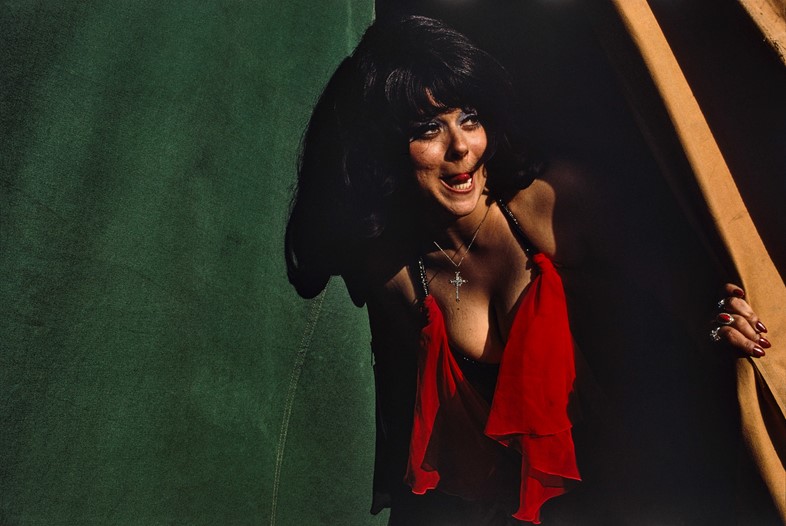
Alongside the collection of portraits, her candid interviews with the dancers, their boyfriends, the show managers, and the paying customers, all eventually formed her landmark photobook, Carnival Strippers [1976] – remarkable for its nuanced presentation of the women and their unconventional lives on the road. Meiselas said: “The complexity of what was happening between men and women, the managers, the girls, the boyfriends, and the wives… there was a lot to make sense of.”
Her portrayal of the dancers and their world is empathetic yet objective – a sensibility that would come to define her future work as a photographer [she was taken on by Magnum in 1976]. Carnival Strippers amplifies ambiguity, rather than seeking to impose a narrative or a moral imperative on what she encounters. “The recognition of this world is not the invention of it,” she explains. “I wanted to present an account of The Girl Show that portrayed what I saw and revealed how the people involved felt about what they were doing.”
“The complexity of what was happening between men and women, the managers, the girls, the boyfriends, and the wives… there was a lot to make sense of” – Susan Meiselas
The book also engages with the idea of the male gaze, the theory of women being afflicted by the double consciousness of embodying both subject and object. This concept was incredibly live at the very time Meiselas’ was developing Carnival Strippers, having been first used by John Berger in Ways of Seeing [1972] and soon to be explored further by Laura Mulvey in her famous essay Visual Pleasure and Narrative Cinema [written in 1973 and published in 1975]. Echoing this idea of women as their own voyeurs, Meiselas says: “A lot of what Carnival Strippers was – and I think you feel it in the first book – is who they perceive themselves as. I was seeing them and they were seeing how I was seeing them, but they also were expressing themselves and that’s really what intrigued me the most… what everybody was saying about what a girl show was… about what a girl was for a guy, for a man.”
Having first been published in 1976, then re-issued in 2003, the latest edition, Carnival Strippers Revisited (published by Steidl), is accompanied by a making-of book including never-before-seen materials retrieved from a box that had remained unopened since 1976, such as notebooks, unseen colour images, and contact sheets. “Making Of is really about going back, searching, discovering, rediscovering, rethinking…” the photographer explains. “In the digital age, people have lost what’s so valuable and incredible about going back to a contact sheet… and see where you were, how you were moving, what you were thinking… I wanted to reveal that, to just open up the process.”
Take a look through the gallery above for a glimpse of some of Susan Meiselas’ images from Carnival Strippers Revisited and Making Of.
Carnival Strippers Revisited and Making Of by Susan Meiselas are published by Steidl.Susan Meiselas: Carnival Strippers Revisited will be at Magnum Photos in Paris until 30 April 2022 and Susan Meiselas: Carnival Strippers Color, 1972-1975 will be at Higher Picture Generation in New York until 16 April 2022
